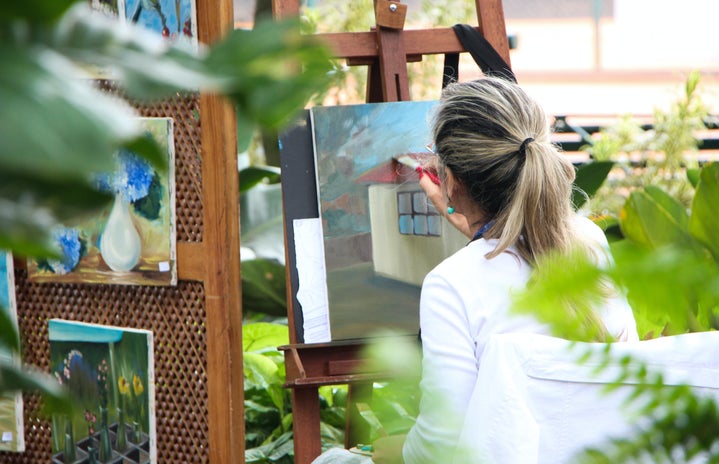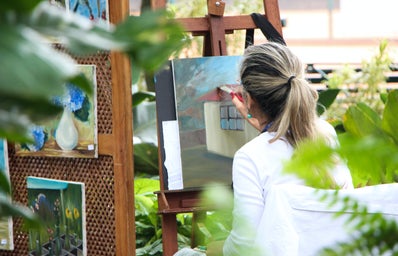Bristol University graduate Jess Piette talks to Her Campus about how her feminist and environmental interests that were recognised during her degree have come to take inspiration in her graduate life.
What have you been up to since graduating in 2014?
Well, I definitely didn’t know what I wanted to do until I finished university. I stayed in Bristol because I love the city and the culture, and decided I wanted to be involved with the art community. I became inspired to set up an exhibition that incorporated my interests in Ecofeminism, and gave a platform for other artists in the city to collaborate and share their work. I studied English Literature at Bristol and took a module in environmental poetry and that was really inspiring to me. The two essays I wrote were heavily influenced by Ecofeminist theory.
What was the exhibition about?
I started in January of last year organising the “Overflow” exhibition which was held in the Centrespace gallery that Autumn. I started by wanting to collaborate with a few fantastic artists I knew- Joe Hellier for instance – who has been part of “The Bristol Bike Project” but also by sending out an open call for whoever was interested in Ecofeminism to get involved. I really wanted it to be a collective experience, process and exhibition, with lots of different voices joined together. With the theme that combined feminism and the idea of ecological ethos as opposed to egocentric ways of thought – I ended up inviting ten artists as opposed to just a few. I wanted a big group of artists in the show, each doing different things but also collaborating together, dispelling the concept as the artist as a lone figure.
What is “Ecofeminism” and how was this incorporated in the “Overflow” exhibition?
Ecofeminism runs on the concept that everything that is wrong in the world is due to patriarchal ways of thought – the system of hierarchy that depends on the subordination of the “other” – such as women, people of different race, sexuality, but also the planet – how the environment is also subjected to the same damage as a result of this sociological system. I think overall, the movement is really to do with the idea of trying to see life in a much more ecological and collective way; seeing yourself as part of a big picture. The artists in the exhibition explored themes such as freedom, motherhood, the female body, sexuality and displacement. “Overflow” reflected the rising ocean levels and the unstoppable force of the natural world, and refers to the reductive patriarchal view of the female body as something innately “overflowing” and hysterical.
What inspired the decision to put on an exhibition in your own time?
I’m really interested in the idea of curation as a sort of way to make things happen and bring people and ideas together in a very political sense. I think there’s a movement in curation – selecting and organizing the exhibition and its pieces – from displaying the artist and creator as an individual. In erasing the individual identity of the artist as a figure behind the work, the art moves towards a collective. With theme I wanted to present, this was a really important part of my curation that I wanted to portray.
Did you exhibit any other artists that were influenced by the subject matter of their degrees?
Yeah, one of the artists Ruth Gordon was a philosophy graduate. Her thesis was called “on a new model for debate,” which entailed thinking of ways to debate that encouraged and allowed more equality. At the exhibition we had an interactive area with a talking stick; people had to be diplomatic and consider the collective body in the room. We also had a discussion area in the gallery where we brought the audience into the discussion as opposed to having them walk around the gallery and back out again. We were looking to encourage the idea of listening and coming up with new ways of thought; for the artist to be involved with the spectator.
What are your plans for the future?
I’ve applied for a masters in contemporary art curation. Coming to create my own exhibition showed me how easy it is to get people together, and how much people are keen to get involved. Creating processual work and exhibitions like “Overflow” which exposed the public to the process of art encourages the involvement of the community. I’m really interested in going on to doing something collaborative and being part of a collective voice and using it for political reasons.
(Photo Credit: rifeguide.co.uk)
Jess says that, through the collective exhibition “Overflow,” she felt like she came to “combine stories and perspectives to form a new, powerful, and overflowing voice.”


